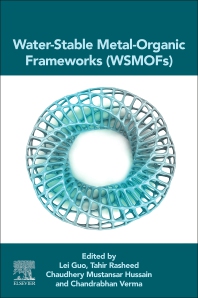Books in Chemistry
Books in Chemistry
Chemistry topic areas include: physical and theoretical, computational, organic, organometallic and inorganic, pharmaceutical and medicinal, analytical and bioanalytical, nuclear, general, nanochemistry, geochemistry, materials and polymer, as well as environmental, green and sustainable chemistry.
- 1st Edition
- November 2, 2025
- Vaidhyanathan Balasubramaniyan
- English
- Paperback9 7 8 0 4 4 3 3 2 8 0 8 4
- eBook9 7 8 0 4 4 3 3 2 8 0 9 1

Practical Heterocyclic Chemistry
- 1st Edition
- Volume 111
- November 1, 2025
- Piero Gardinali
- English
- Hardback9 7 8 0 3 2 3 8 5 3 0 7 1
- eBook9 7 8 0 3 2 3 8 5 3 0 8 8

Analysis of Crude Oil Pollution
- 1st Edition
- Volume 25
- November 1, 2025
- Aleksey E. Kuznetsov
- English
- Paperback9 7 8 0 4 4 3 1 8 9 7 7 7
- eBook9 7 8 0 4 4 3 1 8 9 7 8 4

Density Functional Theory
- 1st Edition
- November 1, 2025
- Luis Cuadros Rodríguez + 2 more
- English
- Paperback9 7 8 0 4 4 3 2 2 1 6 3 7
- eBook9 7 8 0 4 4 3 2 2 1 6 4 4

Problem-Oriented Analytical Chemistry Driven by Chemometrics
- 1st Edition
- November 1, 2025
- Joris W. Thybaut + 5 more
- English
- Paperback9 7 8 0 4 4 3 2 4 0 3 2 4
- eBook9 7 8 0 4 4 3 2 4 0 3 3 1

Elementary Kinetic Modelling in Catalytic Reaction Engineering
- 1st Edition
- November 1, 2025
- Carlos M. Costa + 1 more
- English
- Paperback9 7 8 0 4 4 3 2 6 6 0 6 5

Broadband Dielectric Spectroscopy
- 1st Edition
- November 1, 2025
- Luciana Scotti + 1 more
- English
- Paperback9 7 8 0 4 4 3 2 7 4 2 0 6
- eBook9 7 8 0 4 4 3 2 7 4 2 1 3

Robust Theoretical Models in Medicinal Chemistry
- 1st Edition
- November 1, 2025
- Nikolay Gerasimchuk
- English
- Paperback9 7 8 0 4 4 3 2 8 8 5 1 7
- eBook9 7 8 0 4 4 3 2 8 8 5 2 4

Cyanoximes
- 1st Edition
- November 1, 2025
- Lei Guo + 3 more
- English
- Paperback9 7 8 0 4 4 3 2 9 2 5 6 9
- eBook9 7 8 0 4 4 3 2 9 2 5 7 6

Water-Stable Metal-Organic Frameworks (WSMOFs)
- 1st Edition
- November 1, 2025
- Suresh Kumar Kailasa + 2 more
- English
- Paperback9 7 8 0 4 4 3 3 0 2 7 0 1
- eBook9 7 8 0 4 4 3 3 0 2 7 1 8
